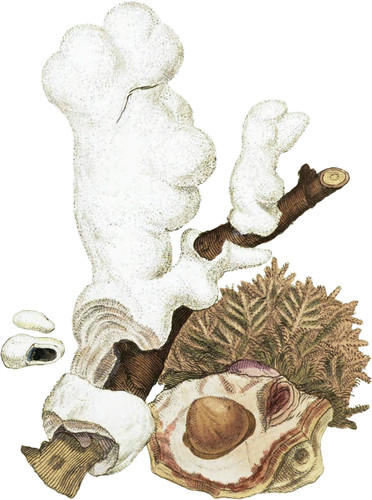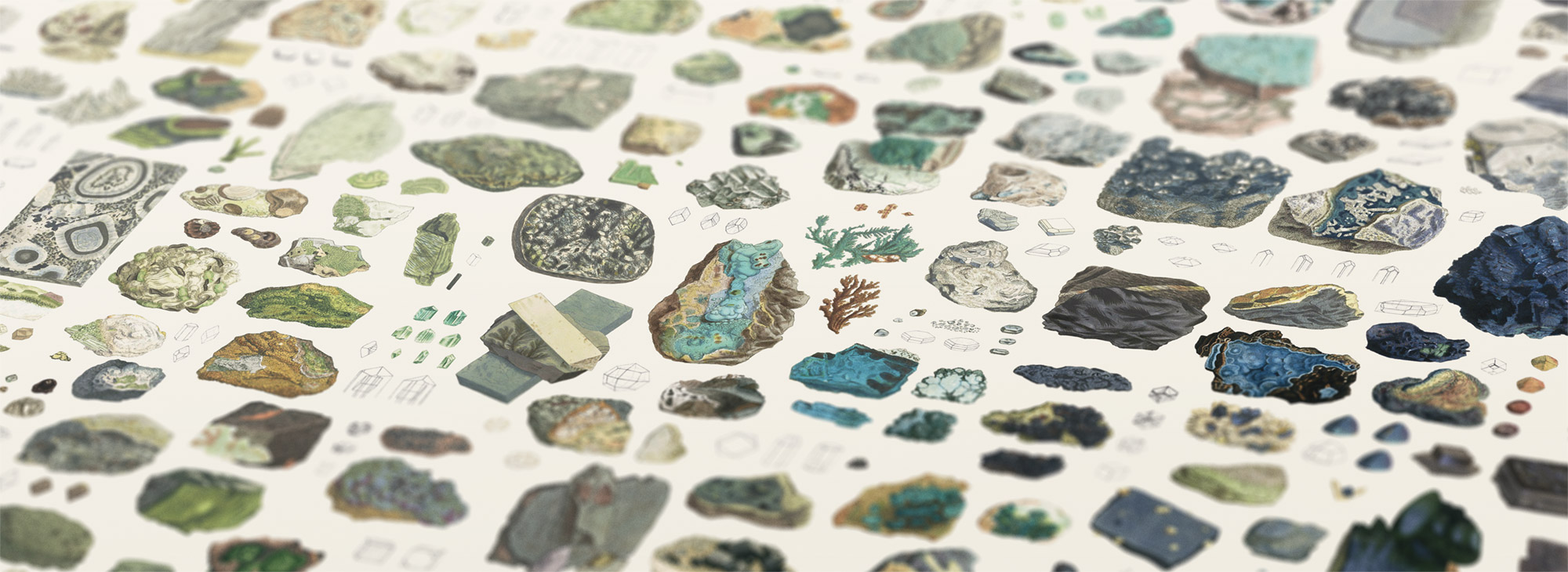 Enlarge
Enlarge
British Mineralogy
Incrusting Carbonate of Lime. Osteocolla
- Div. 2. Imitative.
- Syn.
- Osteocolla. Enc. Brit.
- Chaux carbonatée incrustante. Haüy, 2. 172.
Osteocolla being mentioned in moat modern books, it may naturally be inquired for in mine: and as I should hope not to be wanting where there may be information given, I herewith exhibit a figure of this substance, which is more than ordinarily instructive, although only a variety of Stalagmite. The present specimen was found near Shotover Hill, and shows the curious mode of its accumulation, especially as the substance of the branches is yet distinct. It is called Osteocolla from being supposed to have a power of uniting broken bones. It may vary with the nature of the current that deposits it. This specimen has a peculiarly soft and chalky, somewhat woolly, appearance. It is nearly of the same nature as the deposit in a tea-kettle; but that is harder, and may give an idea that it depended on the water being heated. We find these depositions to be generally about this hardness, or perhaps a little harder and rather more compact. Westminster Bridge has a settling of the Lime from the water on some parts of its sides of a curious undulating figure; and moss with many other subjects, such as birds-nests with the eggs, are covered in a similar manner at Matlock and Knaresborough, first settling on the outside, and then accumulating as the substance sometimes rots. This is especially the case in Moss, when it seems to have taken the entire figure of it. I add a specimen of the Moss; but there are many varieties, some even showing the species by the cast over it. Sometimes the splashing of the water falling from a height heaps the small grains on each other, and forms natural grottos. The specimen figured below, having been deposited in the place of a nut kernel, is truly beautiful, I was favoured with it from Knaresborough by the Rev. W. Danby, accompanied by reflections upon it, such as the contrivances of Nature generally excite in a truly enlightened mind. Lady Wilson has lately brought me some granula of Carbonate of Lime deposited in water used at Charlton House, which are very small, resembling common sand, and which help to show that Ketton Stone is merely a deposition of the same kind. Is it the disturbing of the water, or any particular motion, that might cause the Lime to form granules? We have great variety from this to the Botryoidal stones found in Rutlandshire of a large size:—see tab. 284.

